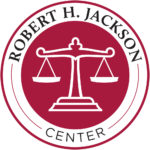Search the Robert H. Jackson Center Website
Search results for storey
Maryland at the Supreme Court Bar
So I shall ask you to bear with us while we indulge our lawyerly trait of discussing law suits. We shall prefer to discuss our own rather than to discuss those which some other men may have tried. In studying constitutional issues in the Supreme Court I became vaguely aware that Maryland has been one of the most frequent of its litigants and had participated in some of the most significant cases which have shaped our constitutional doctrine. I have taken this occasion to review the Supreme Court annals to see how well, by its record in litigation, Maryland has vindicated its designation as "The Free State".
The SA
December 17, 1945 saw Col. Robert Storey commence a presentation on the Leadership Corps of the Nazi Party, the Reich Cabinet and the Storm Troops (SA). He re-emphasized the central point of the Prosecution' theory of the case: "The Nazi Party was the central core of the Common Plan or Conspiracy,...a conspiracy which contemplated and embraced the commission of Crimes against the Peace, War Crimes, and Crimes against Humanity." To show the structure, Col.Storey introduced a chart from a magazine of the Nazi Party entitled "The Face of the Party".
The Plunder of Art
On Dec. 17, 1945, Col. Robert Storey, the first Executive Trial Counsel of the American Prosecution, made the first submission on the plunder of art to the Tribunal. He declared that "he would bring to the attention of the Tribunal and of the world the defendants vast, organized, systematic program for the cultural impoverishment of virtually every community of Europe and for the enrichment of Germany thereby". This excerpt depicts the presentation of the confiscation of Jewish homes especially in Paris. He then presented 39 volumes of photographs of the works of art seized by Einsazstab Rosenberg.
The Gestapo
Following the Christmas recess of the Nuremberg Trial, on Jan. 2, 1946, Col. Robert Storey continued his presentation of the The Accused Organizations-the Gestapo and the SD. His initial presentation was the affidavit of Herman Graebe, the former manager of a branch of the Josef Jung firm in the Ukraine. He described the killing of Jews in the Ukraine. Col. Storey then presented a Gestapo directive regarding the treatment of prisoners of war in Russia. Assisting Col. Storey was Lt. Whitney Harris. Shortly after the presentation, Col. Storey left the Prosecution staff.
The Gestapo and The SD
This was the last session of the Nuremberg Trial prior to the Christmas recess (Dec. 20, 1945). Col. Robert Storey, Executive Trial Counsel of the American Delegation, presented the case against the Accused Organizations- the Gestapo and the SD. The Gestapo or Secret Police was a state organization known for its dreaded network of police agencies which operated first in Germany and then in the German-occupied countries. The SD or Security Service was an early branch of the SS. The Indictment charged that it developed "into a vast espionage and counter-intelligence system which operated in conjunction with the Gestapo". The presentation dealt with the activites of the SD before the War. Also, the simulated attack on the Gleiwitz Radio Station which was the provocation for the invasion of Poland. Col. Storey also outlined the activities of the Einsatzgruppen (Special Task Forces) of the Security Police and the SD which employed the use of "death vans" in Russia.
Graebe/ Hess
On Jan. 2, 1946, Col. Robert Storey read at length from one of the most striking pieces of evidence in the entire Trial, the affidavit of Herman Graebe, the former manager of a Josef Jung firm in the Ukraine. This affidavit was later quoted at some length by the Tribunal in it Judgment. During the reading Rudolf Hess was in extremis and left the defendant's dock. There are two different angles of Hess' illness.
